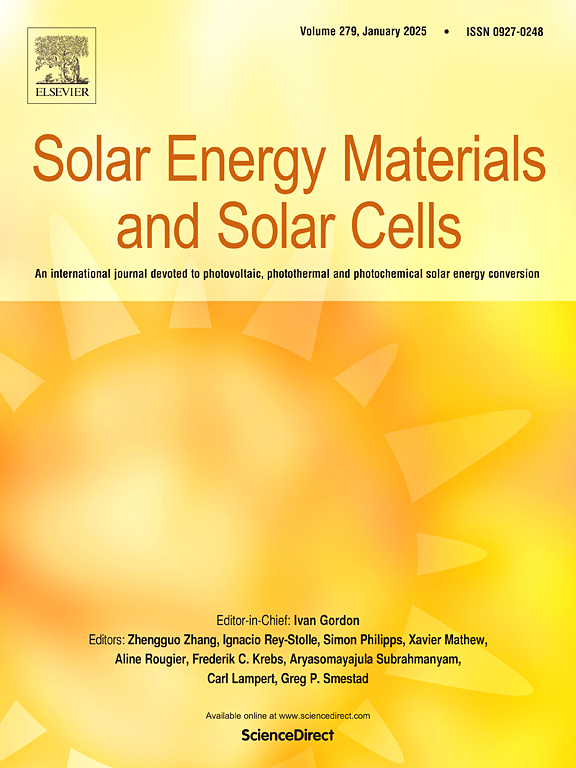Use of Cu ribbons and Cu-Ag HJT cell metallization on ECA based interconnection for PV modules
IF 6.3
2区 材料科学
Q2 ENERGY & FUELS
引用次数: 0
Abstract
The availability of Silver is probably the main concern for PV cell's metallization and interconnection. It is then a critical element in most scenarios at the terawatt scale, reducing its usage is hence of prime interest. As a low temperature method, Electrically Conductive Adhesives (ECA) curing process has proved its worth in recent years. This interconnection technology shows also the advantage of high mechanical performances. This paper highlights the latest results obtained on the interconnection of HJT solar cells with ECA bonding material, focusing on the silver consumption reduction by the use of the latest generation of low-silver ECAs.
In this study, three different ECA formulations were compared and investigated, ensuring their compatibility with ribbon coated by different conductive materials (Ag, SnAg and bare Cu). Finally, the introduction of Cu-Ag pastes for cell metallization was evaluated. We show that the new low-silver ECAs can even outperform previous-generation ECAs demonstrating higher performance and reliability. We also show a slight drop in performance of these new ECAs in combination with Sn/Cu ribbons, maintaining the reliability. Combining low-Ag ECAs with Sn ribbons can result in a silver content reduction of 6 mg/Wp, and even up to 8 mg/Wp with bare Cu ribbons to reach 14mg/Wp total consumption in the module.
求助全文
约1分钟内获得全文
求助全文
来源期刊

Solar Energy Materials and Solar Cells
工程技术-材料科学:综合
CiteScore
12.60
自引率
11.60%
发文量
513
审稿时长
47 days
期刊介绍:
Solar Energy Materials & Solar Cells is intended as a vehicle for the dissemination of research results on materials science and technology related to photovoltaic, photothermal and photoelectrochemical solar energy conversion. Materials science is taken in the broadest possible sense and encompasses physics, chemistry, optics, materials fabrication and analysis for all types of materials.
 求助内容:
求助内容: 应助结果提醒方式:
应助结果提醒方式:


